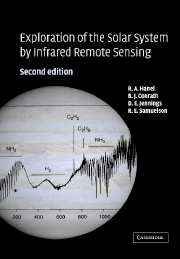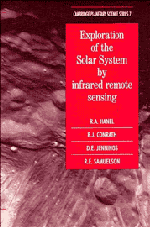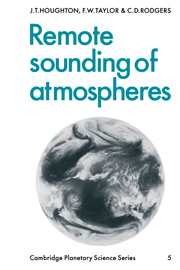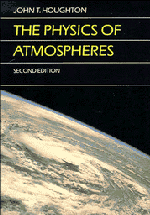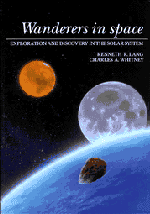Exploration of the Solar System by Infrared Remote Sensing
This book describes all aspects of the theory, instrumental techniques and observational results of the remote sensing of objects in our Solar System through studies of infrared radiation. Fully revised since publication of the first edition in 1992, it now incorporates the latest technologies, new mission results and scientific discoveries. It also includes a fully up-dated bibliography to reflect the advances made in this field during the past ten years. All planets from Mercury to Pluto, many of their satellites, asteroids and comets are discussed. The presentation will appeal to advanced students and professional planetary science researchers, although some chapters are of wider interest. The authors have drawn on their extensive experience at the NASA-Goddard Space Flight Center to produce a definitive account of what can be learned from infrared studies of our planetary system.
- Fully revised, it incorporates the latest technologies, new mission results and scientific discoveries
- The only book on this topic written for advanced graduates and researchers
- Written by four authors from the NASA Goddard Space Flight Center, providing a huge wealth of knowledge and expertise in this area
Reviews & endorsements
From review of the First Edition: 'Hanel and coauthors are among the foremost practitioners of infrared remote sensing as applied to planetary exploration. Highly recommended for libraries maintaining a research collection in comparative planetology or atmospheric physics.' F. R. Chromey, Choice
'Because Hanel and colleagues have (rightly) concentrated on the underlying fundamental principles, their discussion will provide a useful reference for years to come. This book is a valuable resource volume which many planetary scientists and advanced graduate students would find worth consulting.' Bruce Fegley, Jr , Geochimica Et Cosmochimica Acta
'… presents an outstanding review and appraisal of the theory, instrumentation and interpretation of infrared planetary astronomy conducted mainly from spacecraft … a lot of attention is directed toward spectroscopy, including some gorgeous Voyager emission spectra from the limb of Titan that show an exotic menagerie of hydrocarbons.' Joseph W. Chamberlain, American Scientist
'… a valuable addition to the literature. As mentioned earlier, it would benefit a much wider readership than its title suggests.' Optics and Photonics News
'… will appeal to advanced students and professional planetary science researchers.' The Strolling Astronomer: J.A.L.P.O.
Product details
No date availableAdobe eBook Reader
9780511055157
0 pages
0kg
187 b/w illus. 11 tables
Table of Contents
- Introduction
- 1. Foundation of radiation theory
- 2. Radiative transfer
- 3. Interaction of radiation with matter
- 4. The emerging radiation field
- 5. Instruments to measure the radiation field
- 6. The measured radiation field
- 7. Trans-Neptunian objects and asteroids
- 8. Retrieval of physical parameters from measurements
- 9. Interpretation of results
- Closing remarks
- Appendix 1. Mathematical formulas
- Appendix 2. Physical constants
- Appendix 3. Planetary and satellite parameters
- References
- Abbreviations
- Index.

